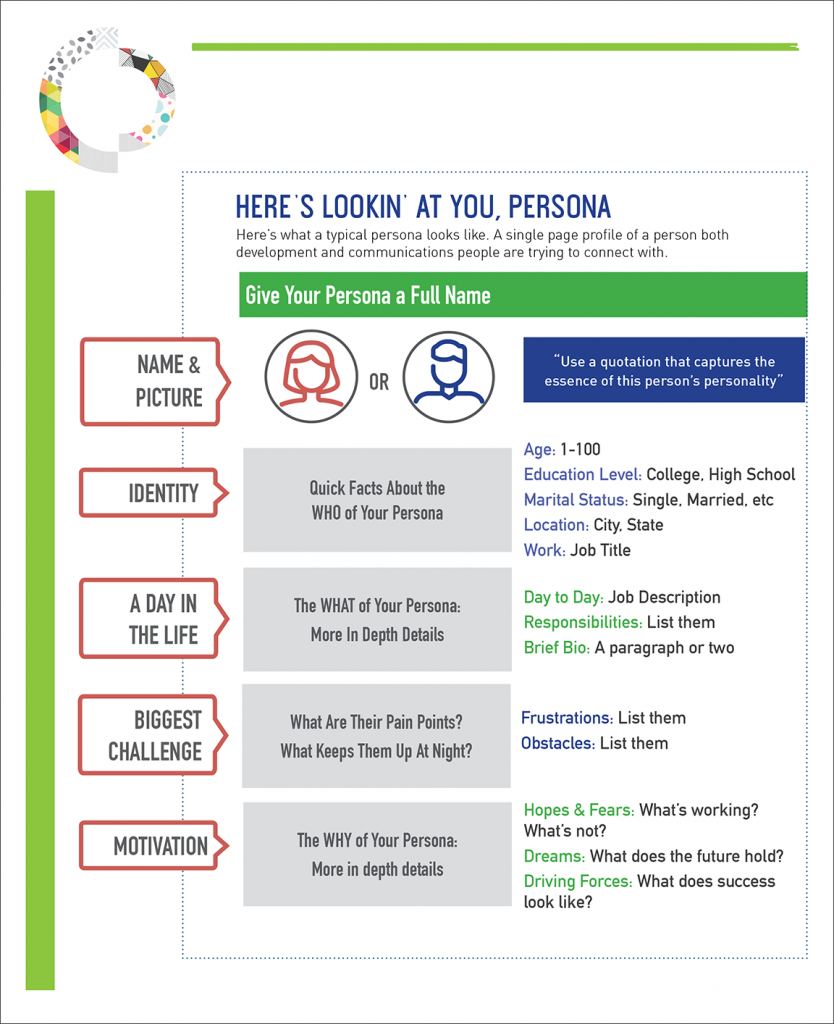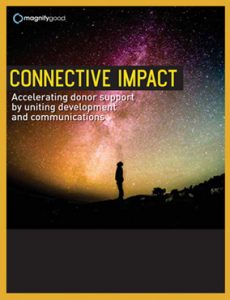A persona is a composite sketch of a key segment of your audience. It describes the audience as if it were one person. It is a personal view of their motivations, beliefs, and aspirations. It goes beyond their age, gender, income, etc. Personas organize all the key information about each target audience in one place, so everyone has the same information to inform their work.
Customer personas are common in the for-profit world. For businesses, they are fictional representations of segments of a company’s key customers. Based on data and research, they help companies solve challenges about marketing content, products and services to their ideal consumers. But do these tools have a place in the social sector?
They sure do.
Call them what you’d like — audience personas, donor personas, constituent personas, beneficiary personas — no matter the name, any organization that has a goal to achieve can benefit from creating personas. Sometimes organizations get caught up in what they think a campaign (even with the best intentions) — and can lose sight of the needs of the people they are trying to reach. This results in failed campaigns and outreach efforts.
Personas help you deliver content that will be most relevant and useful to your audience. They are also a key part of Connective Impact because they help put development and communications people on the same page about who they are trying to connect with. Clearly understanding who you’re attempting to attract as supporters of your cause is an essential element in building an effective communications strategy.
Creating donor personas for your nonprofit or foundation
How well do you know your donors and prospective donors? Who are they really? If you answer this question with something vague like high net-worth donors, think again. Make a detailed list of donors and prospective donors, and this time get more specific.
Now, take a look at the list and capture all the information you know about each audience you included.
Personas are best developed when you have data and qualitative research to work with. Is the term research intimidating? Don’t let it stop you. Foundations and nonprofits can conduct interviews to gather the information needed (Want to know more about this process? Talk to us.)
Once you’ve captured insights and information, take a step back and look at what you’ve collected. What are the gaps?
Based on the information you’ve collected, you’ll notice common attributes among advocates and will start to weed out personas that are a waste of your time and energy.
Elements of personas for your nonprofit or foundation:
Here comes the fun part: creating the persona profile. Here’s a snapshot of what’s typically included.

- Picture & Name – You don’t have to use a picture of someone you know, but using a picture –even if it’s a stock image — helps make the persona come to life. We also highly recommend naming the person.
- Identity – The who of your persona goes here. Think about their gender, marital status, education, job title, level of education, etc.
- A Day in the Life – The what of your persona goes here. What are they facing on a day-to-day basis? What is their function at work, what are they responsible for?
- Biggest Challenge – What are their pain points? What keeps them up at night?
- Motivation – The why of your persona goes here. What are their hopes, fears and dreams? Why do they get up in the morning? Why do they do what they do? What does success look like? What will change if they are successful.
Learn more about the role of personas in communications. Download Connective Impact: Acceleration donor support by uniting development and communications.




